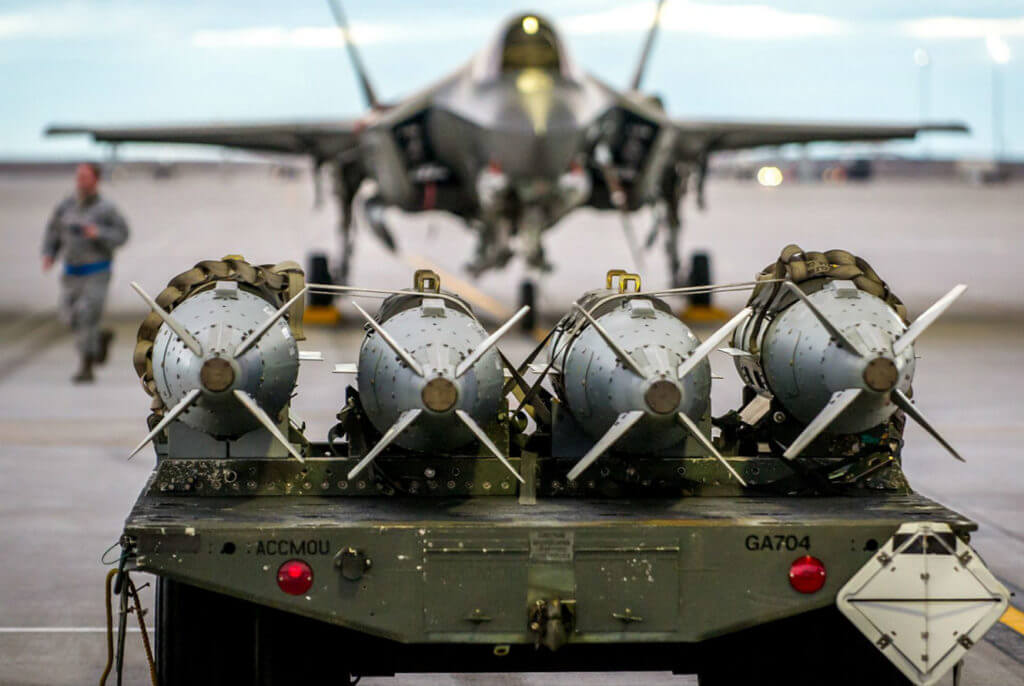On Monday, the United States announced that it would be donating $18 million wrth smart bombs to the Philippines in order to combat Islamic militancy in the Mindanao islands. At a ceremonial turnover at the Department of Foreign Affairs headquarters in Manila, US National Security Adviser Robert O’Brien presented the precision-guided munitions or smart bombs Foreign Affairs Secretary (FAS) to Teodoro Locsin Jr. The delivery of the defence equipment honours a commitment made back in April by US President Donald Trump, when he pledged to provide the $18 million worth of missiles in a phone conversation with Philippine President Rodrigo Duterte.
Commenting on the US’ commitment to helping the Philippines in fighting Islamic State and its aligned militants, the NSA said, “President Trump is standing with President Duterte as we combat ISIS here in Southeast Asia.” He further added, “This transfer underscores our strong and enduring commitment to our critical alliance.” O’Brien also expressed the US’ condolences to the Philippines after consecutive typhoons recently wreaked havoc on human life, property, and the environment in the island country.
In Locsin’s own remarks, the FAS said that he was “pleased to receive, on behalf of the Philippine government, the donation by the US government of precision-guided munitions or PGMs, valued at approximately $18 million (USD)”. He further added that the Philippines looks forward “to training for the use of these weapons with the best and undisputed military power in the world”.
It is estimated that since January 2000, there has been a huge surge in the presence of radical Islamist groups in the country, with reports of 40 major bombings against civilians and civilian property. During this time, the Islamic State, in particular, has gained a significant foothold in Mindanao, Basilan, Jolo, and other surrounding islands. In response, the Duterte has launched large-scale military operations on the islands, including a five-month siege in 2017 when 1,200 people died. However, while the government momentarily regained control of these areas, the number of foreign fighters and militants only seems to multiply. Indeed, repeated counter-insurgency operations have fuelled the growth of splinter and independent terror groups. Mindanao and the surrounding southern islands are now rife with insurgents belonging to IS-linked groups, the Abu Sayyaf Group (AFG), the Moro Islamic Liberation Front (MILF), and the Moro National Liberation Front (MNLF).
Only earlier this month, Philippine’s President Rodrigo Duterte had decided to temporarily suspend his earlier decision to terminate the twenty-year-old Visiting Forces Agreement (VFA) with the United States for a second time, as the countries worked on forming a long-term mutual defence arrangement. O’Brien also reiterated on his visit that the White House welcomed Duterte’s decision to extend the VFA.
This move is viewed as a shift towards a pro-US policy by the Philippines, because, since coming into power in 2016, Duterte has been known to take a pro-China and Russia stance, while at the same time condemning the US’ foreign and military policies. However, Manila and Beijing have competing claims in the South China Sea.
China has been significantly increasing its military presence on islands claimed by the Philippines. Recently, the Chinese People’s Liberation Army (PLA) has brought in advanced KQ-200 anti-submarine planes and KJ-500 control aircraft to the Fiery Cross Reef in the Spratly Islands chain. Beijing has also declared Fiery Cross–which is known as Kagitingan in the Philippines–as a part of its own territory in Southern Hainan. Additionally, it has stationed maritime militia vessels for over a year around Thitu Island, which is the Philippines’ largest occupied island in Spratly.
Duterte, after months of saying the Philippines is not in a position to confront China, made his first moves towards toning down his pro-China rhetoric at the United Nations General Assembly (UNGA) earlier this year, when he highlighted a 2016 arbitral tribunal that discredited essentially all of Beijing’s claims in the South China Sea as “beyond compromise.” O’Brien on his trip also made sure to validate Philippine’s claims in the South China Sea, where China has been consistently building upon its fleet presence, exacerbating maritime tensions with other countries who claim ownership of various parts of the region.
Although Duterte has joined several world leaders in congratulating Joe Biden on his victory, earlier this year, he was reported to have urged Filipino-Americans to vote for Trump, who is yet to concede defeat. O’Brien represented the Trump administration in this meeting, which formed part of a six-day tour to Vietnam and the Philippines, with the aim of taking a final step towards advancing the US’ interests in the region and countering Beijing’s territorial ambitions.
US Donates $18 Million in Defence Equipment to the Philippines
In an effort to bolster the Philippines' counterterrorism efforts against Islamic militants in Mindanao, the US has donated $18 million worth of smart bombs to Manila. Read more:
November 23, 2020

U.S. Air Force photo by J.M. Eddins Jr.
